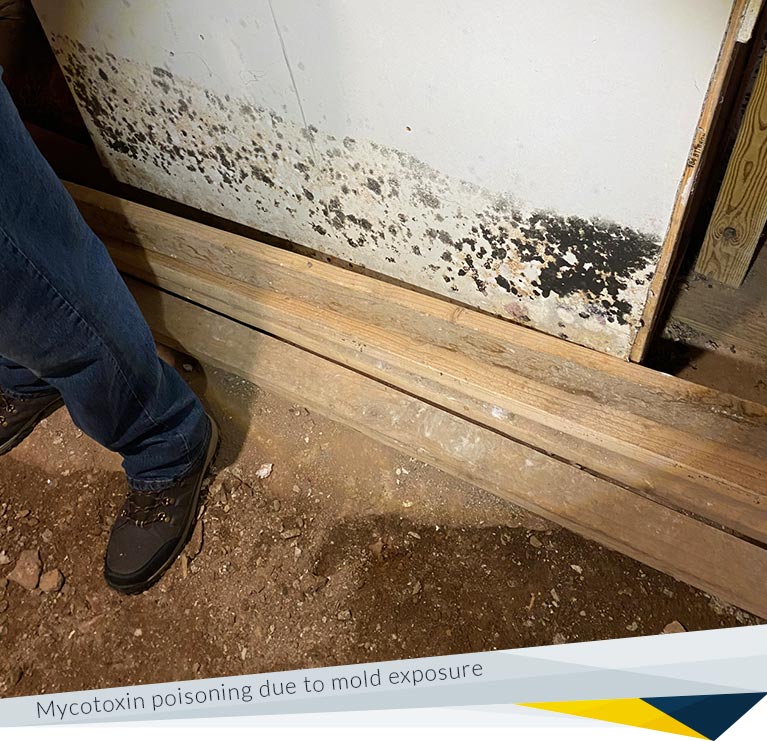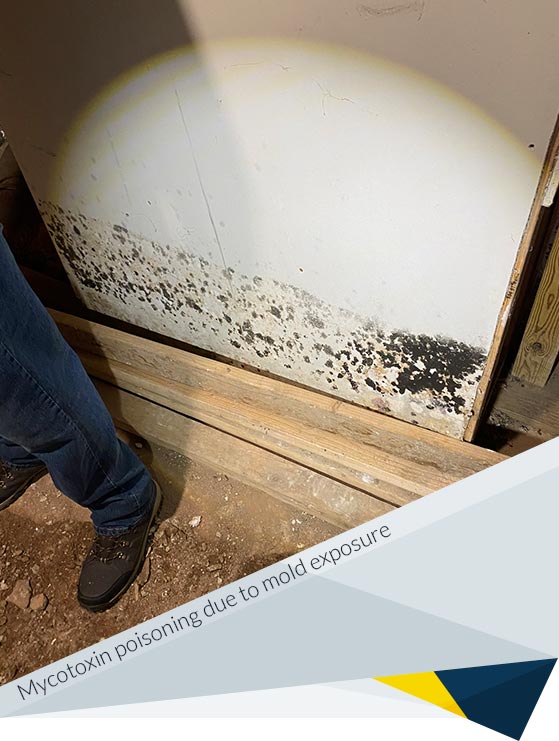
Have you ever heard of Stachybotryotoxicosis? The answer is no if you're like most people. It's not a common word, but you should learn about this condition because it can have horrible results. People who own homes must know what causes the disease, how to treat it, and the symptoms.
Stachybotryotoxicosis is a sickness that can happen if you are constantly exposed to some harmful molds, with Stachybotry's chartarum being the most common. We will discuss the illness and show how it was found and treated using a professional mold removal procedure.

There are more than 120 types of Stachybotrys. Stachybotrys chartarum (S. chartarum) is one of the most dangerous fungi in the world and should be looked at more closely. S. chartarum puts harmful chemicals into the environment that can harm people or animals through contact with their mucous membranes. This could lead to necrotic changes or even a bleed that could kill you. People constantly exposed to these germs may get Stachybotryotoxicosis, which is very dangerous.
Symptoms of the condition can differ for each person. Still, studies from peer-reviewed medical journals like Biology show that the most common ones are headaches, tiredness, coughing, chest pain, burning in the nose, and aches and pains in the muscles and stomach.
To get the disease, you must be exposed to certain S. chartarum spores, black mold. The CDC says that black mold usually grows on things with a lot of fiber or where there is too much moisture.
People who get this illness could have a lot of different health problems. How bad these effects are depends on how much and how long you were exposed. One study from Paediatr Child Health looked at several worrying health effects that can happen when you are exposed to Stachybotrys chartarum, such as:
It's important to remember that serious health problems are much less likely to happen unless you've been exposed to high amounts of mycotoxins for a long time, even though the effects of stachybotryotoxicosis are scary.
Your animal friends can have the same health problems as people exposed to black mold. In animals, symptoms can range from sniffles similar to allergies to problems with blood clotting. Here are some other signs:
The first thing you can do to avoid getting Stachybotryotoxicosis is to make it less likely for mold to grow in your home. Mold grows best in damp places, so this generally means controlling the air's moisture. Keep these important safety tips in mind:
Repair any leaks as soon as possible, whether in a pipe, roof, or window, so mold doesn't grow.
Mold will not be able to grow as easily if the air inside is kept below 50%. In places with a lot of humidity, dehumidifiers can help reduce the humidity levels.
Make your home's ventilation better, especially in places like the kitchen, bathroom, and laundry room that tend to have a lot of wetness. Open the windows or use air fans as much as you can.
To keep mold from growing, have a professional check and repair your HVAC units regularly. Change your filters daily.
When it comes to illnesses caused by mold, every case is different. We worked with a client who was very worried about their health and the health of their beloved pet, which is why they came to us for help.
Our client was dealing with their pet dog's ongoing sickness, which showed up as a loss of appetite, tiredness, and nosebleeds occasionally. Stachybotryotoxicosis was diagnosed after tests and examinations by a veterinarian. This is a dangerous disease caused by black mold toxins.
At the same time, our client started having the same health problems, such as being tired all the time, getting headaches, and having trouble breathing. Because they lived with other people and there was black mold in their home, the client's doctor thought that mold contact was probably making them sick.
The client was worried about what was happening, so they called FDP Mold Remediation to get professional help to fix the problem. During our first meeting, the client told us about their failed attempts to get rid of the mold, which kept coming back after each do-it-yourself cleaning. They were worried about their health and their dog's health, and they were angry that all the cleaning they had done hadn't fixed the problem. We quickly set up an appointment for mold inspection to better examine the mold problem.
Our professional team went to the client's house with much experience and a deep knowledge of mold and how it grows. First, we did a complete visual check, looking for signs of mold growth in places like damp spots, corners that are hard to see, and behind furniture. We wanted to make sure there was no hidden mold growth in other parts of the house during this check, not just where the client had seen mold before. It was familiar that we found the trouble spots.
After figuring out which parts of the house let the mold grow, we planned how to fix the problem. We've carefully honed our mold removal method over many years of work. This is how our professionals took care of the cleanup job:
The first thing we did to fix the problem was to keep the damaged area from other people. This step stops mold spores from moving to other parts of the house while the problem is fixed. We did this by using plastic sheets and tape to block off the area. We also ensured that the isolated area had negative air pressure by using special tools to force wind into the room but not out.
Next, we started the process of getting rid of the mold. Our trained professionals, who were wearing safety gear, started carefully removing the mold that could be seen on the surfaces. This meant using antimicrobials and cleaning to remove mold on non-porous surfaces. Because they are so good at holding mold spores, porous materials like walls, carpets, and insulation infested with mold had to be removed and thrown away.
We did a complete cleaning of the area after getting rid of the mold. For this process, the area was vacuumed with a HEPA filter to eliminate any mold spores that were still there. To ensure no mold or mold spores were left, we cleaned non-porous surfaces again and wiped them down with damp cloths.
The last part of our mold removal process was getting rid of all the things that were affected by black mold correctly. When throwing these things away, care must be taken because they can still contain mold spores. We ensured that we followed all local rules for getting rid of moldy things by sealing them in plastic bags before taking them out of the client's home.
After the repair process, our work isn't done. Follow-up steps are an important part of our service that lets us ensure the mold is gone for good and that your home stays healthy. After the mold removal process, we follow up with the client about ten days later to ensure the mold hasn't come back. This step lets us catch any possible repeat appearance early so that we can fix it immediately if needed.
We checked in with the client from the case study a few months after the skilled mold removal process was finished. He was glad to say that there were no more signs of mold. What's more, both his health and his pet's health had gotten a lot better.
As this case study shows, being around mold can be very bad for your health, whether you are a person or a pet. Ignoring the problem or trying do-it-yourself fixes that don't work can make it worse and cause serious health problems like Stachybotryotoxicosis.
A good option is to have professional mold removal done. At FDP Mold Remediation, we use a thorough process to ensure that we not only get rid of the mold that can be seen but also fix the problems that are causing it. Our method is a long-term fix that will protect your home from mold growth in the future and help you get better. Get in touch with us at 877-421-2614 right away to find out more and get a free quote!



